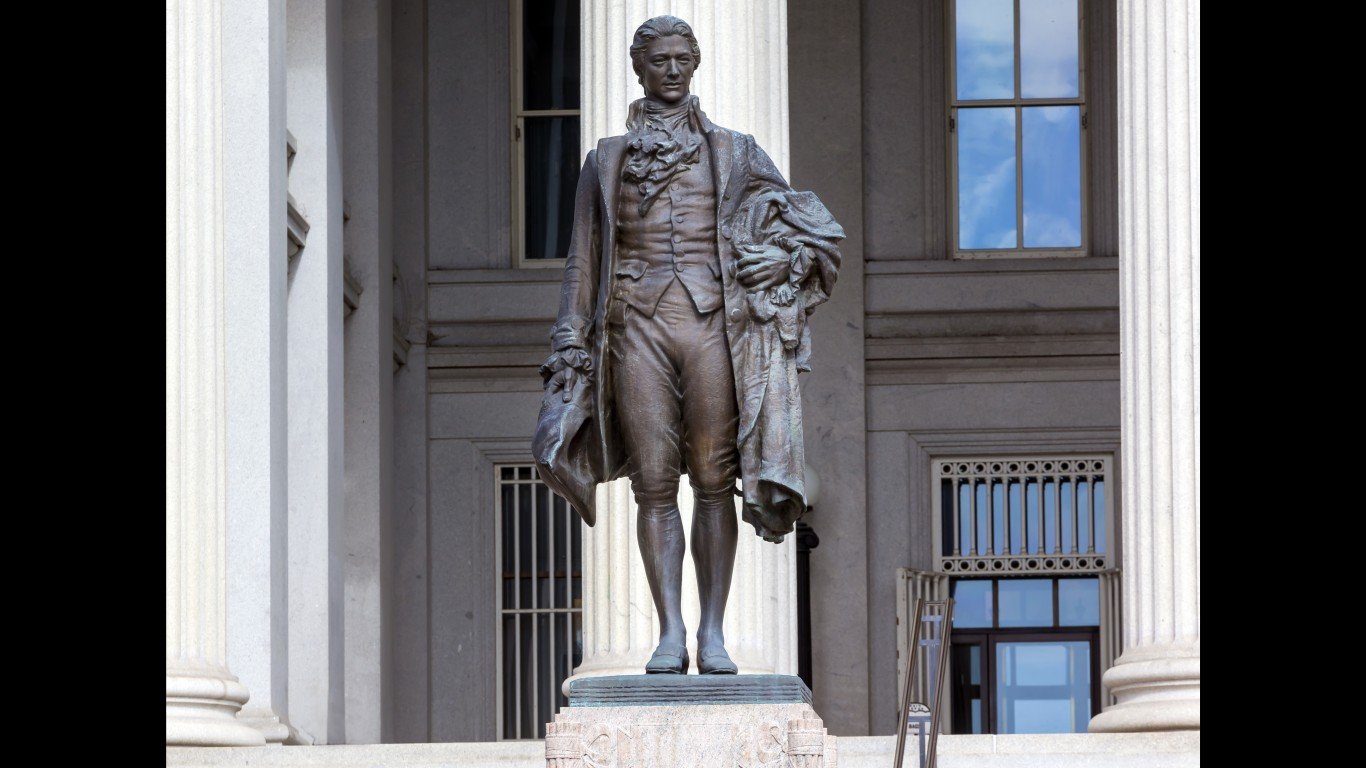

For millions of Americans, Social Security is a significant part of their retirement plan. This well-known program has a complex history. We’ll take a look at the complete story of Social Security, from its inception during the Great Depression to its role in modern times.
We’ll even look at the early ideas and influences that laid the groundwork for what would eventually become Social Security.
We’ve written extensively on Social Security. For more details on the program, visit our Social Security hub page. We got all the information for this article from the official Social Security website, so you can rest assured that it’s accurate.
Without further ado, let’s jump in.
Early Ideas and Influences (Pre-1935)

While Social Security wasn’t founded until the Great Depression, the concept of Social Security is very old. Long before the Social Security act, there were many speaking out for the well-being of workers and retirees.
For instance, Thomas Paine’s “Agrarian Justice” recognized the need for social support. This pamphlet proposed a system of pensions that was funded through land taxes. This early proposal was never implemented, but it doesn’t take much to see a connection between it and modern Social Security programs.
The government did implement some pensions before Social Security. For instance, in the aftermath of the Civil War, a national pension program was established to compensate veterans. In this program, disabled soldiers and the widows of soldiers received financial support.
In the late 19th and early 20th centuries, the United States saw a surge of industrial growth. However, this period was also fraught with harsh working conditions and low wages. Poverty was common, and many became destitute with old age. Rapid urbanization wasn’t kind to everyone.
Traditional family structures were strained as many relocated to the cities. Many elderly were without a safety net.
At the same time, there was a rise in social activism and reform movements. Many activists called for social welfare reforms to address poverty and unsafe working conditions, helping raise public awareness of these problems.
The Birth of Social Security (1935)

The Great Depression of the 1930s plunged the United States into an unprecedented economic crisis. Millions of Americans lost their jobs and faced poverty. In fact, as many as 25% of the U.S. population was unemployed. Factories shut down, and most families struggled.
The elderly were particularly vulnerable, as many lacked savings or support systems. Most older Americans faced poverty and homelessness.
President Roosevelt saw the plight of these older Americans and sought a solution to the problem. In 1934, he established the Committee on Economic Security, tasked with developing a plan for social insurance. This committee worked to develop a program that would provide economic security to those who were most vulnerable.
The Social Security Act of 1935 came into being the next year, emerging directly from the work of the committee. While this program was initially much smaller than what we know today, the Act laid the foundation for Social Security, which has existed ever since.
The original Social Security Act focused on two main things:
- Unemployment Compensation: Originally, the Act established a federal unemployment insurance program, which was further developed later.
- Old-Age Insurance: This core program provides monthly retirement benefits to eligible workers after 65. It was funded through a payroll tax shared by employers and employees.
While Social Security has changed much today, this program set the foundation.
Expansion (1936 – 1960s)

The very first Social Security benefits were issued in January 1937. These first payments were very small, but they did represent the crucial first step in getting the program off the ground. They were also a significant help to the elderly, who had little else to rely on.
In 1939, the program expanded to include survivors’ benefits, which are one of the three types of benefits Social Security offers today. These benefits provided continued payments to dependent spouses and children of deceased workers. This addition provided extra support to families who lost their primary breadwinner.
World War II impacted the Social Security program financially. Initially, the wartime boom led to increased payroll tax, helping to fund the program. At the same time, wartime mobilization also decreased the number of eligible retirees. Many people went back to work. These two factors allowed the program to increase its reserves.
The program expanded further in the 1950s, extending coverage to more workers, such as farm laborers. Cost-of-living adjustments were also introduced, which helped the program keep up with inflation.
By the end of the 1960s, Social Security was considered a cornerstone financial program. Millions of Americans relied on its benefits, and it was well-funded.
Modernization (1960s – 1990s)

By the 1960s, Social Security had become nearly universal. In 1965, Social Security extended benefits to include Medicare for those over 65. At this point, Social Security became a true social insurance program, supporting retirees and providing inexpensive healthcare.
While the program was very successful, the expanding scope of Social Security began to raise concerns about its long-term financial ability. The number of retirees was increasing, presenting a challenge for the program’s longevity. Congress enacted tax increases in the 1970s and 1980s to bolster Social Security funding.
The Social Security Debate (1990s – Present)

Demographic changes and lower birth rates have raised significant concerns about Social Security’s ability to maintain itself. With fewer individuals being born, fewer workers are paying into the system. At the same time, retirees are receiving benefits as they were before. The ratio of workers to retirees is becoming increasingly imbalanced.
This demographic shift could quickly deplete Social Security funding, leading to budget cuts and tax hikes.
In an attempt to address this, the retirement age has been gradually increased. While it was 65 when the program started, the full retirement age is now based on your birth year. Check out our comprehensive explainer for a full explanation of how social security currently works.
However, the debate surrounding Social Security is still active. Some policymakers are advocating for more drastic reforms, such as allowing individuals to invest a portion of their payroll taxes into the stock market. Other proposals include benefit cuts or means-testing, lowering benefits for wealthier retirees.
While these debates are ongoing, Congress has not enacted any major reform in quite some time. However, minor adjustments have been made to address funding concerns.
Take This Retirement Quiz To Get Matched With A Financial Advisor (Sponsored)
Take the quiz below to get matched with a financial advisor today.
Each advisor has been vetted by SmartAsset and is held to a fiduciary standard to act in your best interests.
Here’s how it works:
1. Answer SmartAsset advisor match quiz
2. Review your pre-screened matches at your leisure. Check out the
advisors’ profiles.
3. Speak with advisors at no cost to you. Have an introductory call on the phone or introduction in person and choose whom to work with in the future
Take the retirement quiz right here.
Thank you for reading! Have some feedback for us?
Contact the 24/7 Wall St. editorial team.


